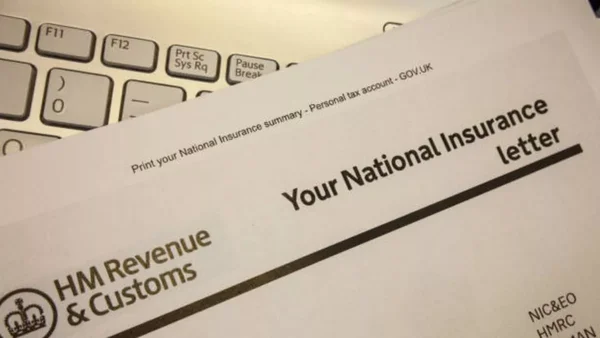What you need to know
Your tax code might look like a random string of numbers and letters, but it holds the key to how much tax you pay.
Millions of UK taxpayers have a tax code, yet many don’t understand what it means or how it works.
You can find your tax code on your payslip, P60, or in correspondence from HMRC, and it's important to check it regularly to ensure it's correct.
Getting to grips with your tax code can help you spot errors, avoid overpaying tax, and reduce the risk of having the wrong tax code, which could lead to underpayment or compliance issues. If you notice you have the wrong tax code, it's important to correct it as soon as possible.
The most common tax code in the UK is 1257L, but there are many variations depending on your circumstances.
Pie tax, the UK’s first personal tax app, shows you exactly what your tax code means for your monthly income. Or if you’re just here to get to grips with it all, let’s break it down!
What Is A Tax Code?
A tax code is how HMRC tells your employer how much tax to take from your wages. Think of it as your tax ID that determines your take-home pay.
The employee's code is used by employers to determine how much tax to deduct from your pay under the PAYE system.
Your tax code appears on your payslip, P45, P60 and any letters you get from HMRC about your tax.
Each tax code is made up of numbers and letters and while they may seem confusing, they follow a simple pattern once you know the basics. Employers use the PAYE tax code to deduct the correct amount of tax from your wages.
If you have more than one job or pension, you might have different tax codes for each income source.

The Normal Tax Code Is 1257L – Here's What It Means
For the 2023/24 tax year, 1257L is the basic PAYE tax code that applies to most people in the UK.
The number 1257 represents your tax free income for the year your tax-free Personal Allowance of £12,570. Simply remove the last digit to see the full amount.
The ‘L’ at the end shows you’re entitled to the standard Personal Allowance with no special circumstances. Once your income exceeds the tax-free income threshold, you pay basic rate tax on the remainder.
If you see this code on your payslip, it generally means you can earn £12,570 before paying any income tax.
What Do The Numbers In Your Tax Code Mean?
The numbers in your tax code represent your tax-free allowance divided by 10.
For example, 1257 means you can earn £12,570 before you start paying tax.
If you see a lower number, like 1000, it means something has reduced your Personal Allowance perhaps you have company benefits such as a company car or medical insurance. Any benefit provided by your employer, like these, can affect your tax code and reduce your allowance.
Higher numbers mean you’re getting extra tax relief, perhaps for work expenses or pension contributions.
Tax is deducted from your pay by your employer based on your tax code and the value of any benefits you receive.

What About Those Letters In Your Tax Code?
Tax code letters help employers and employees understand how tax deductions are calculated. Each letter in the tax code system has a specific meaning.
L is the most common letter, showing you get the standard Personal Allowance. If you are a Scottish taxpayer, your tax code will have an 'S' prefix, which means Scottish income tax rates apply.
BR means all your income from this job or pension is taxed at the basic rate (20%) with no tax-free amount.NT indicates no tax is to be taken from this income at all.
K codes mean you have income that isn’t being taxed another way and it’s worth more than your allowances.
M or N shows you’re using the Marriage Allowance – either giving 10% of your allowance to your spouse (M) or receiving it (N).
For the 2023/24 tax year, tax codes for England and Northern Ireland are the same. If your income is high enough to be taxed at the additional rate, your tax code may reflect this with a different letter or number.
When Your Tax Code Might Change
Starting a new job or joining a new employer often triggers a tax code change, sometimes resulting in an emergency tax code being applied temporarily. Emergency tax codes, such as W1, M1, or X, are used when HM Revenue does not have complete information about your income, and these codes result in tax being calculated on a non-cumulative basis for each pay period. Once HM Revenue receives the necessary details, they will issue an updated tax code to your employer or pension provider.
If you get new perks from your employer, like a company car or health insurance, your code will change to reflect the tax due on these benefits. Company benefits can also affect your tax code and the amount of tax deducted from your pay.
If you have a second job or other job, your tax code may be adjusted to ensure the correct amount of tax is deducted from each source of income. Other income, such as rental income or untaxed income, can also affect your tax code and may require you to complete a Self Assessment Tax Return.
Changes to your Personal Allowance, perhaps through marriage allowance transfers, will update your code. Changes in personal circumstances, such as marriage or moving to a different region, can also trigger a tax code update. Employers and pension providers must notify HMRC when your circumstances change, so your tax code can be updated.
HMRC might also change your code if they discover you’ve paid too much or too little tax in previous years. Unpaid tax from a previous year can reduce your current tax-free allowance.
If your code is wrong, you may pay too much or too little tax, and you should contact HM Revenue to correct it. Cumulative tax codes calculate your tax based on your total earnings for the year, while emergency tax codes use only the current pay period. Tax deducted from your pay is based on your tax code, pay period, and any untaxed income or benefits. If you have untaxed income, you may need to complete an assessment tax return to report it to HM Revenue.
Pension providers use your tax code to deduct the correct amount of tax from your pension payments. Both your employer or pension provider are responsible for applying the correct tax code and notifying HM Revenue of any changes.
I once received a P800 tax calculation showing I’d overpaid by £340. The cause? An incorrect tax code that had been applied after changing jobs mid-year.

How To Check If Your Tax Code Is Correct
Log into your Personal Tax Account on the HMRC website to see your current tax code and what it’s based on.
Check your latest payslip against your circumstances has anything changed that HMRC might not know about? Your tax code determines how much pay tax is deducted from your earnings through the PAYE tax system.
If you have multiple jobs, make sure your Personal Allowance isn’t being applied to more than one income source.
Don’t assume HMRC always gets it right tax code errors are common and can cost you money if not spotted.
Final Thoughts
The standard tax code is a crucial part of the UK tax system that directly affects your take home pay.
Understanding what your tax code means puts you in control of your tax affairs and helps you spot potential errors.
If your circumstances change during the tax year, keep an eye on your tax code to ensure it remains accurate.
Always contact HMRC promptly if you believe your tax code is incorrect it's ultimately your responsibility to ensure you're paying the right amount of tax.

Pie.tax: Simplifying what is the normal tax code Tax
Getting to grips with tax codes shouldn't feel like solving a cryptic puzzle. Pie.tax makes understanding your tax situation simple and straightforward.
Our real-time dashboard shows exactly what your tax code means for your monthly income and flags potential issues before they become problems.
For those juggling multiple jobs or income sources, we bring everything together in one clear view so you can see your complete tax picture.
We'll alert you when your tax code changes and explain what it means in plain English, not tax jargon.
Fancy seeing how it works? Take a look at the Pie.tax app to discover how we can help you stay on top of your taxes.











